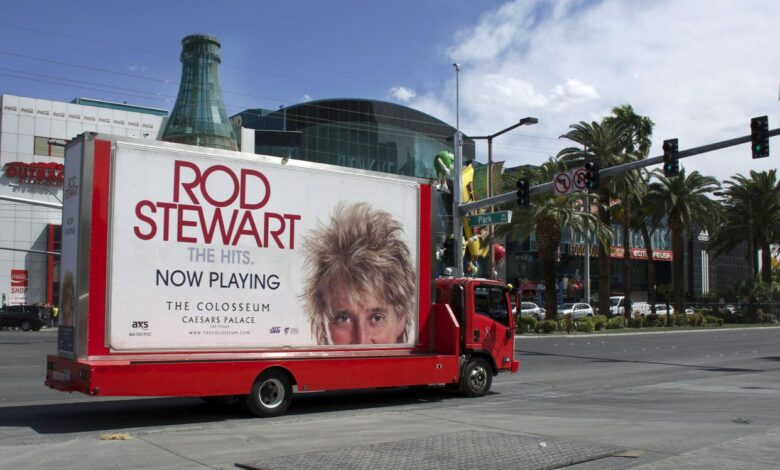Serve Robotics Goes Public With Ad Plan; What Do Ads On Robots Mean?

LAS VEGAS, NV – MARCH 27: A mobile billboard truck advertises singer Rod Stewart’s concerts at … [+]
Serve Robotics is a sidewalk delivery robot company which was spun out of Postmates when it was acquired by Uber. It’s been operating independently, but recently became publicly tradable via a reverse merger (similar to a SPAC.) As part of their public filings, Serve disclosed that they plan to sell ads on the robots as they travel the sidewalks, and that this could account for 25 to 50% of their revenue.
(Disclaimer, I am a stockholder in Starship, which also makes delivery robots.) For vehicles to show ads is nothing new, taxis and many other vehicles have had a steady business doing that for decades with no problems. Starship’s robots usually have a decal with the URL of the delivery service, though they don’t advertise other companies as yet.
While neither Serve, nor any other company have any known intention to send out robots solely for the purpose of advertising, it does open a public policy question. What are the consequences of robots driving the streets and sidewalks, not to serve people or cargo, but only to carry ads?
We see this to a limited extent today with “billboard trucks,” flatbed trucks with a large billboard that a human driver takes through crowded areas to show the billboard. They are most common in Las Vegas, particularly around big trade shows, where ad prices are expensive and crowds are thick. There are even billboard trucks with digital screens which can cycle ads.
Having robots do this makes financial sense to the companies that provide this service. They’ll do it cheaply. With electric drive, it will be even cheaper, particularly on the slow crowded streets they prefer. The cheaper it gets, the more common it will be. The problem, of course, is these trucks add to congestion on the streets, emissions to the air and fill our world with even more advertising, and that’s surely going to create pushback.
There will be calls to regulate it and that will be difficult. One might forbid robots from driving—or even humans—solely to display advertising, or if they are not doing something related to serving the movement of people or cargo. (That would include moving to and from customers, repositioning, and training.) If these trucks got a ticket for this, though, they could fairly easily come up with loopholes. Just stick a small piece of cargo in the truck and have it take a roundabout route to its not really real destination. Offer discounted taxi rides as long as the passengers want to drive the streets where advertising is desired. In fact, it’s hard to figure a rule that can forbid this which can’t be avoided, or which does’t violate free speech principles, and can be easily enforced. One could ban all vehicle advertising, but if Serve is right that it might pay 1/4 to 1/2 the cost, it could make delivery more accessible and lower cost. In addition, while the truck in the photo above is obviously only for ads, it could be made to look like a cargo truck (generating more emissions) easily enough.
These advertising trucks are also sometimes used for political messages, which are much more protected speech than advertising is. Every campaign bus is usually a giant political billboard, though they also move people of course. It won’t be long before the first election that features robots that parade around political ads, and possibly even stop and talk to you about the candidate.
We should probably hope that companies resist the temptation to send out vehicles for no other reason than to carry ads for as long as possible. They won’t resist forever, though.



